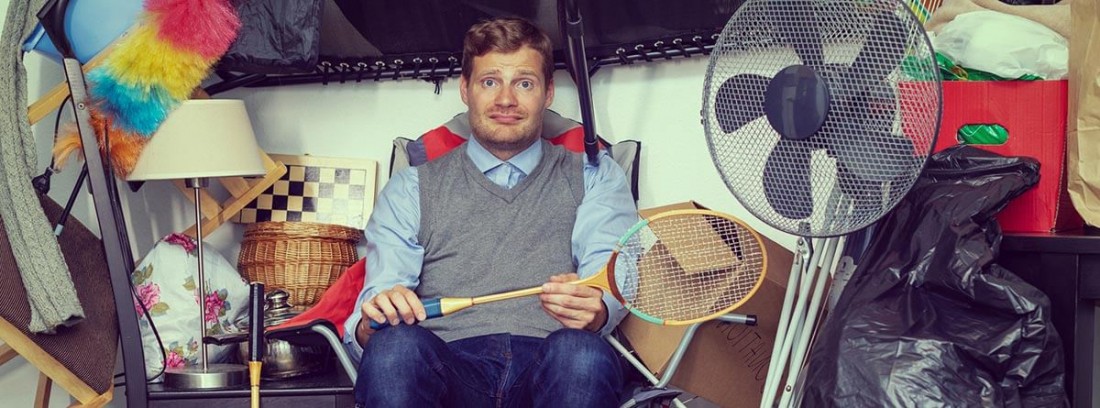Diogenes syndrome or hoarding disorder

What is it and why is it characterized?
Hoarding disorder, popularly known as Diogenes syndrome, is a psychiatric disorder recently included in the DSM-5, the latest official manual of psychiatric diagnoses. It is part of the and is characterized by the inability to get rid of material possessions regardless of its actual value.
Although they can store objects of more or less value, the most common is that they are stored chaotically mixed with less relevant objects that most people would discard directly, or remain stacked with other objects in places not enabled for that purpose (the in floor, hallway, etc.).
Differences with collecting
Every time I know need to store more things, and thinking about doing without them generates a directly proportional discomfort and anguish, to the point that these objects invade vital spaces, crowding them until they are uninhabitable, both for physical space and health-related. For example, it may be that the person cannot cook in his kitchen or sleep in his bed due to the large amount of accumulated objects. In extreme cases you can even store useless objects or garbage.
All this accumulation of things generates problems with the social environment (relatives, neighbors or even authorities), which also ends up producing a high level of discomfort due to the conflicts that are generated, the person feeling progressively more alone due to the feeling of incomprehension on the part of others and the need to intervene more and more accused of the immediate environment.
What differentiates hoarding disorder from the person who collects or stores a lot is not the number of items that are kept. In people without problems, the collection is organized and systematic, it does not produce disorder or discomfort, nor does it produce relational or work difficulties.
A special manifestation of hoarding disorder is the popularly known "Noah syndrome”, Or accumulation of animals, usually dogs or cats, with a lack of minimum standards such as nutrition, hygiene, sanitation, overcrowding, etc.
Who develops it most often?
There are no conclusive data, but it is estimated that between the 2 and 6% of the population may suffer from this psychopathology. It occurs in all cultures around the world.
Is more common in males than in women, and the age group most prone to suffer from it is in older adults, ages 55-94. About 50% of the people who present it have a direct relative who has suffered from it before.
Some symptoms usually begin early in life, in late childhood or adolescence, but the most serious problems occur later, usually aggravated by difficult, stressful, or traumatic situations. Indecision it is a common personality characteristic of people with this disorder.
75% of accumulators also have a mood or anxiety disorder. The quality of life is progressively deteriorating. When it becomes chronic and there is an excessive accumulation, there is a greater risk of, lack of sanitation and even risk of fire, which ends up leading to legal eviction processes.
The reasons for the accumulation?
Normally the person accumulates objects because:
- It attributes an emotional meaning to objects (memories of moments or people).
- He thinks that, at some future point, the object may come in handy.
- You feel more secure around objects.
- Think that wasting things is not correct or ethical.
How can the environment help?
- Never confront with a person with accumulation directly and do not ask him to throw things. For him they are essential, so he can feel violated and close in band. Even reinforce that he keeps things, but make him see the impossibility of locating what is necessary due to the chaos and the high volume of objects. Make it clear to him that you respect that he accumulates them, but that he puts them in order, that he finds a suitable place for everything where he can find what he needs in the future, if the need arises. Precisely ordering deactivates the disorder.
- Includes other agents. consult with social services and health services to ensure that the person's minimum needs are covered. It offers feasible change possibilities.
- Do not allow isolation. Participate in the person's life, show empathy, get involved in their needs, make it easier for them to show how they feel ...
- Ask if the situation as a relative overwhelms you.
CALCULATE YOUR PRICE
- It is part of obsessive-compulsive disorders and is characterized by the inability to get rid of material possessions regardless of their real value.
- 75% of accumulators also have a mood or anxiety disorder. The quality of life is progressively deteriorating.
- When it becomes chronic and there is an excessive accumulation, there is a greater risk of falls or injuries, lack of sanitation and even risk of fire, which ends up leading to legal eviction processes.
(Updated at Apr 14 / 2024)